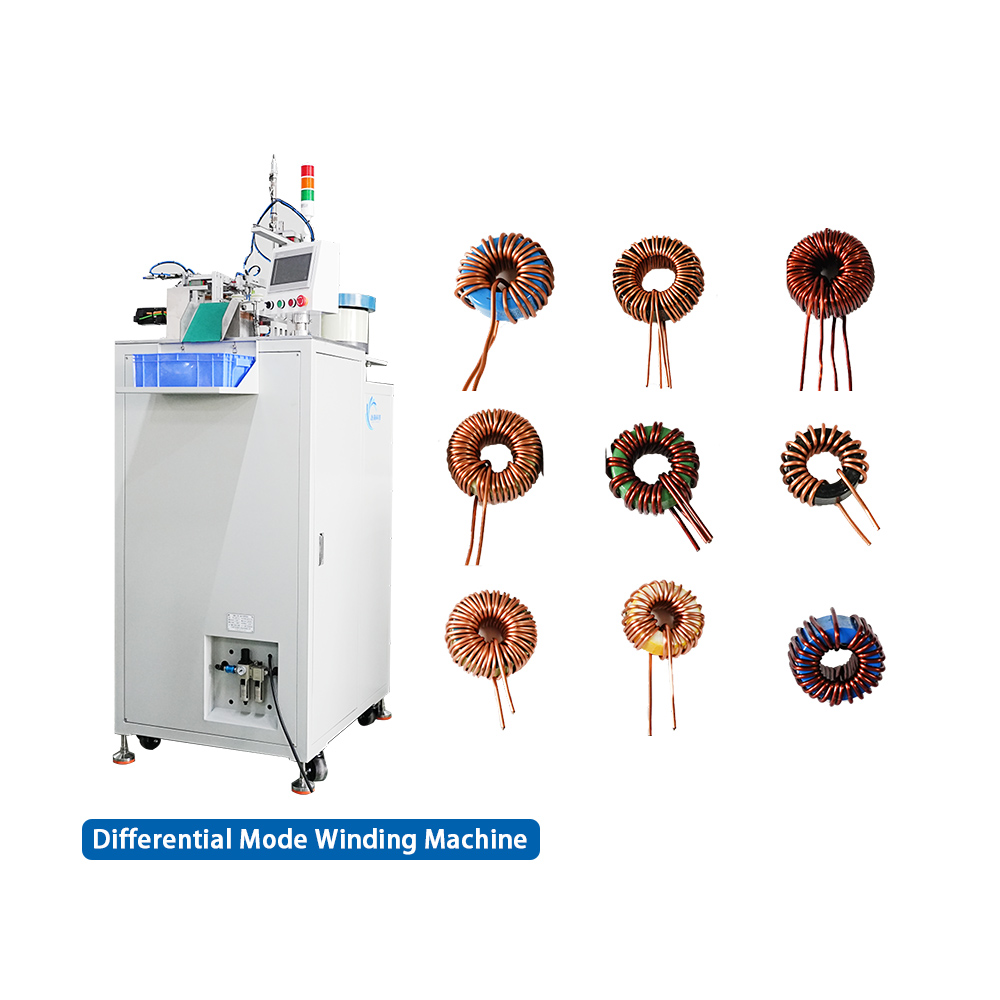
2025-07-03 18:06:36
A Differential Mode Winding Machine is a specialized electromechanical device designed for precision winding of coils, particularly in applications requiring high-frequency noise suppression. These machines employ advanced servo-controlled mechanisms to achieve winding tension accuracy of ±1% and layer alignment precision within ±0.05mm. The differential winding pattern creates opposing magnetic fields that effectively cancel out common-mode interference while allowing differential signals to pass through.
Key technical specifications include:
Winding speed: Up to 3000 RPM with servo-controlled acceleration/deceleration
Tension control: 0.1-10N with closed-loop feedback system
Positioning accuracy: ±0.01mm for critical EMI suppression applications
Wire diameter range: 0.05mm to 2.5mm for versatile applications

Modern differential mode Winding Machines incorporate several advanced features:
Multi-axis Synchronization: Utilizing 32-bit DSP controllers with 1μs cycle time for perfect coordination between spindle rotation and traverse movement
Active Vibration Damping: Integrated accelerometers provide real-time vibration analysis, reducing harmonic distortion by up to 40dB in finished coils
Temperature Compensation: Precision thermal sensors maintain winding tension within ±0.5% across operating temperatures from 5°C to 45°C
Automated Layer Counting: High-resolution encoders (0.001° resolution) ensure exact turn counts with 99.99% repeatability
Material Memory: Stores over 500 wire profiles with automatic parameter adjustment for different insulation materials
Differential mode winding machines serve critical functions in multiple industries:
Power Electronics: Manufacturing of common-mode chokes for variable frequency drives, achieving >60dB noise attenuation at 1MHz
Automotive Systems: Production of differential signal transformers for CAN bus networks, meeting ISO 7637-2 pulse immunity standards
Telecommunications: Fabrication of broadband baluns with consistent impedance (100Ω ±2%) across 1MHz-2GHz range
Medical Equipment: Precision winding of MRI gradient coils requiring sub-millimeter dimensional accuracy
Aerospace: Manufacturing of EMI filters for avionics that must withstand 50G shock and -55°C to 125°C operation
Proper maintenance ensures optimal performance and longevity:
Daily Maintenance:
Clean guide rails and linear bearings with IPA 99.9% to remove particulate contamination
Verify tensioner calibration using certified test weights (accuracy class F1)
Inspect wire guides for wear (replace if groove depth exceeds 0.1mm)
Weekly Maintenance:
Lubricate ball screws with ISO VG 32 grease (apply 2-3g per meter of travel)
Check servo motor brushes (replace if worn below 5mm length)
Perform backlash measurement on traverse system (must be <0.005mm)
Monthly Maintenance:
Recalibrate encoder systems using laser interferometer (accuracy ±0.001mm/m)
Test insulation resistance of windings (>100MΩ at 500VDC)
Verify cooling system performance (maintain 20°C ±1°C coolant temperature)
Annual Maintenance:
Replace harmonic drive grease (use Molykote EM-30L for 10,000-hour service life)
Perform dynamic balancing of spindle (vibration <0.5μm at operating speed)
Update control software and firmware to latest versions
For optimal troubleshooting:
Use FFT analyzers to diagnose vibration patterns (identify frequencies above 0.5× spindle RPM)
Monitor servo current waveforms for signs of mechanical binding (should be <5% THD)
Check thermal imaging of motor windings (hot spots indicate >10°C above ambient)

Specialised in automated winding equipment and system development, production, sales and technical services as one of the high-tech enterprises.
+0769 82312151
+86 135 8090 8886
+86 131 9207 5119
3F, No.51 Minghua Road, Liangjia Village, Shijie Town, Dongguan City, Guangdong Province, China
Copyright © 2025 Dongguan Zhiqiang Electronic Technology Co., LTD | Privacy Policy | Terms and Conditions